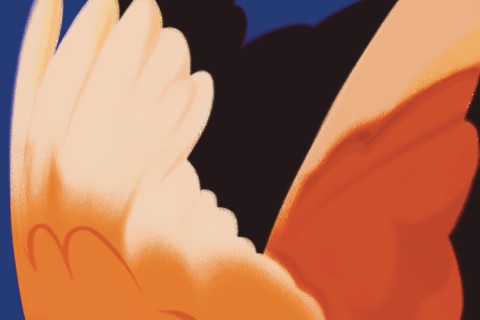Barnyard behavior
In the spirit of St. Francis, I have begun to recognize that my nearest neighbors are not the Woodards or the Blacks—although they are very good neighbors indeed—but the various creatures with whom I live my life on a daily basis. These include the red-tailed hawks, white-tailed deer, red foxes and wild turkeys that require nothing from me but my willingness to leave them be, along with the domesticated horses, dogs, cats and chickens that depend on me for everything from their daily bread to their annual immunizations.
While some humans judge me daft in this regard, I believe I am on solid theological ground. Not only did God’s covenant with Noah include “every living creature,” but if you read the book of Psalms all the way through, it is hard to miss the references to God’s wings. “How precious is your steadfast love, O God! All people may take refuge in the shadow of your wings.” When I compare human behavior to bird behavior, it is enough to make me wonder which of us was really created in the image of God.
While I care for a large neighborhood of chickens, the white Silkies are my favorites. They are fantastic-looking birds, with tufts of fluff on their heads and feathers on their feet. Some of them even have beards. From their beaks to their toes, they are covered with soft, white plumage that never quite graduates into real feathers. Consequently, they do not fly, and they nest on the ground, which is why I keep them in a pen instead of letting them roam free. Given their evolutionary disadvantages, it is amazing that Silkies still exist, but since they show up in Marco Polo’s diaries, they have been around a long time.
I first discovered them when I needed a foster mother for an orphaned guinea chick. I had heard that Silkies are good mothers, so I shopped around in the Market Bulletin until I found some for sale over in Royston. After a little bargaining, I had one rooster, four teenagers and two hens in my crate when I saw one gray hen strutting around the pen.
“What’s she?” I asked.
“Blue Silkie,” the chicken lady said, “cross between black and white.”
“How much for her?” I asked.
“Six bucks,” the chicken lady said, impressing me with the gulf between price and worth. That blue-gray hen was a stunner, with soft herringbone feathers the color of Irish tweed. The black eyes with which she studied me were perfectly round. When I reached out to touch her, she pecked me, but only for show. It was love at first sight.
When the Silkies and I got home, I saved her for the orphaned chick. First I lay on the grass while she and the baby watched each other through the mesh of the cage. Then I placed her inside. Both she and the baby froze. The baby cheeped. The hen did not move a feather. The baby cheeped again. The hen stayed right where she was. The baby took a few steps toward her. I held my breath. The gray hen lifted her wings. The baby scooted right into that open door. When I checked on them an hour later, all I could see was a little guinea chick head poking out from under that gray hen’s wing. Six bucks. What a deal.
After she raised that baby, I let her join her own family again. They beat up on her for a while, until she agreed to be last at the food bowl. Then they let her in. A few weeks later, something broke into the pen one night and ate her and the rooster. When I went down to feed them in the morning, all I found were a few silky feathers tilting in the wind.
But her sisters have picked up where she left off. When my Mille Fleur chickens lay eggs they will not sit on, I put them under a Silkie that sets until they hatch. When I hatch Old English Bantams in the incubator, I wait until the sun goes down. Then I take the babies down to the Silkie pen and slide them under a sleepy hen. The next morning they are all trailing around behind her while she shows them the ropes of staying alive.
“Look, food!” she squawks when I throw corn, and they all come running.
“Run for cover!” she yells, when the shadow of a hawk passes overhead, and they all go diving under her wings.
This is counterintuitive, I might add. If this hen is into the preservation of her species, then she ought to be looking out for her own babies and letting the others go hang, but she does not. She accepts all comers, no questions asked. She has never seen a chick she didn’t like.
I ought to trust her by now, yet every time I introduce her to a new baby with nowhere else to go, I can feel the back of my throat get tight. Please, please, please, don’t peck this baby, I plead. It’s so little. It has never laid eyes on any momma but you. Then I set the chick in the cage with her, sitting down where I can watch what happens.
The baby cheeps. The hen does not move a feather. The baby cheeps again. The hen stays right where she is. The baby takes a few steps toward her. The hen lifts her wings. Come to momma, honey.
“Jerusalem, Jerusalem . . . How often have I desired to gather your children together as a hen gathers her brood under her wings, and you were not willing!” Jesus had chicken neighbors too, I guess, and from them he learned about God’s wings. Watching them, he knew what he wanted to be and do. One cluck from him, and I know too.





